Anyone new in the field of reef-keeping would want some beginner-friendly corals to begin their hobby. Generally, people start with softies. But over time, when you have gained enough experience, you should promote yourself and get something new for your aquarium. Large Polyp Stony (LPS) corals could be a fine addition in that regard.
Among many, Hammer Corals, Acan Corals, Bubble Corals, Trumpet Corals, Disk Corals, Brain Corals, and Lobed Brain Corals make the best LPS corals for all beginners.
Read the article to know more about their maintenance and see which one you like the most to be your first-ever LPS coral.
Top 7 Best LPS Corals You Can Keep In Your Reef Tank
LPS Corals grow by developing a solid bone formation of calcium carbonate to secure their internal soft polyps. You can see it as an evolutionary connection between SPS corals and Softies.
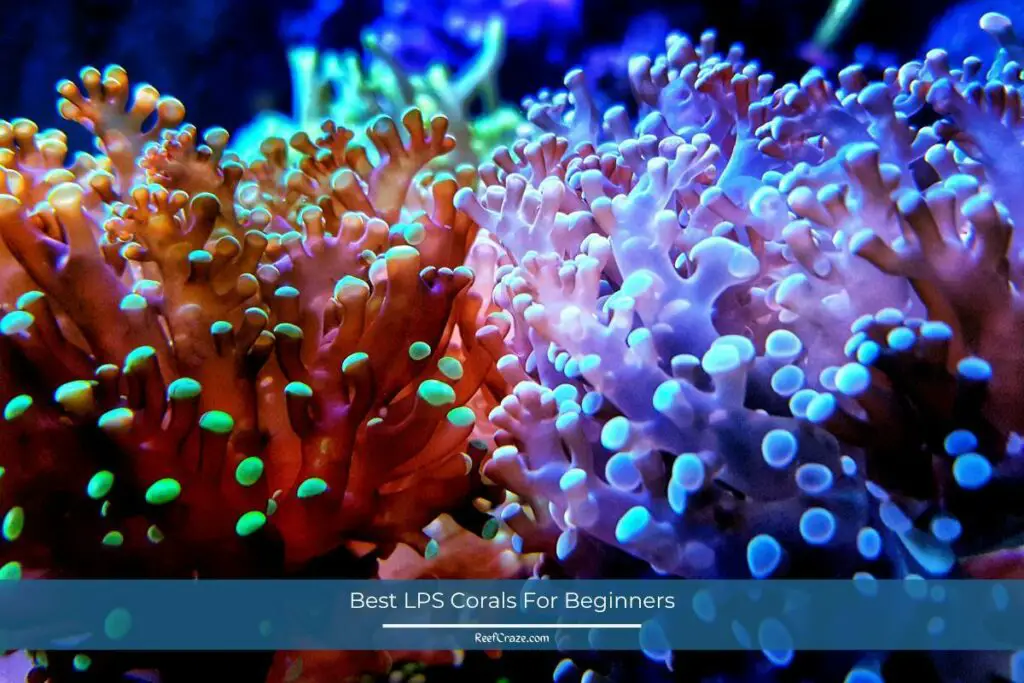
They are also mid-level difficult to keep, more tolerant than SPS corals, and more demanding than Softies. The corals I chose to bring up here are the easiest because of their affordability, availability, and minimal maintenance.
After delineating the profiles of the mentioned LPS corals in the intro, I will give you more names in case you want to look into them too. Afterward, remember to peruse the care guide to learn the most important stuff about their tank requirements.
1. Hammer Coral
Among the array of corals available for home aquariums, Hammer Coral stands out due to its distinct appearance and unique needs. Named for their peculiar tentacles, which resemble a broader T-shaped hammer, these corals create a captivating display.
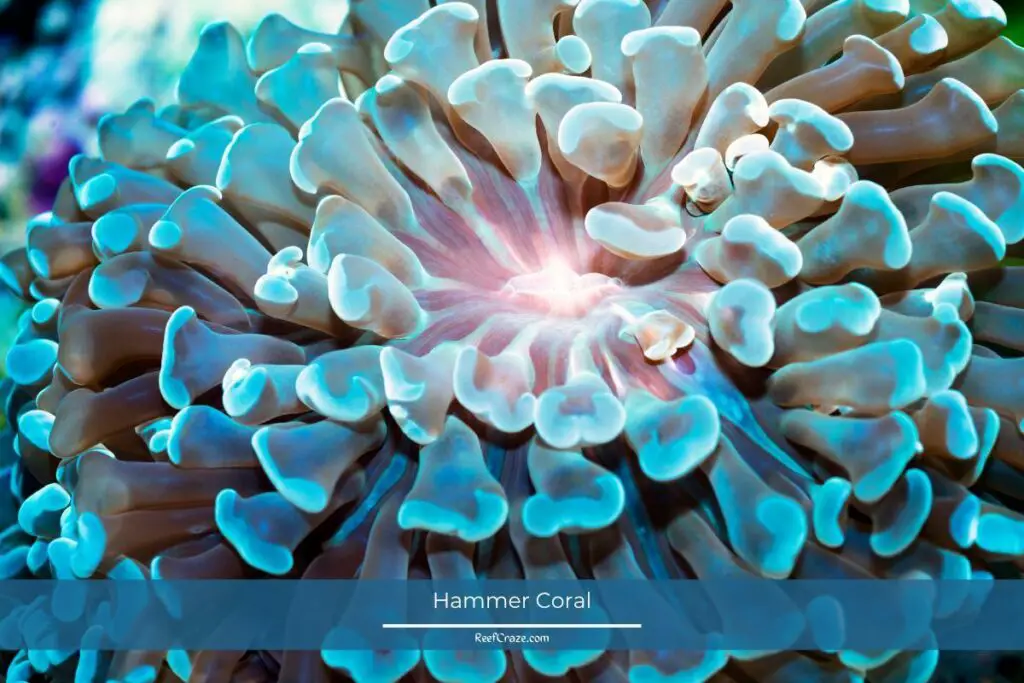
However, caring for them requires a careful balance of the right conditions. Here’s a quick overview of the unique aspects of Hammer Corals:
| Hammer Coral | Description |
|---|---|
| Appearance | Hammer Corals have strange-looking tentacles that resemble fat and round hammers, forming a broader T-shape. |
| Lighting | They prefer medium to low lighting arrangements. High-intensity lighting can cause them to contract, while too low light can dull their colors. |
| Water Flow | Moderate water flow is ideal for Hammer Corals, as it allows for flexible tentacle movement. |
| Food | Hammer Corals do well without supplemental feeding. They can capture tiny foods from the water, enhancing their growth. Otherwise, sufficient current and lighting supply them with organic elements to survive. |
| Nature | Hammer Corals are more aggressive than other corals. They have long tentacles that can encroach on their neighbors. Placement in the tank is crucial to avoid conflicts with other species, except for Torch and Frogspawn corals, which make suitable tank mates. |
2. Acan Coral
Among the most beginner-friendly and low-maintenance corals available are the Acan Corals. Named for their rich, vibrant colors and intricate patterns, they provide a visually striking addition to any aquarium.
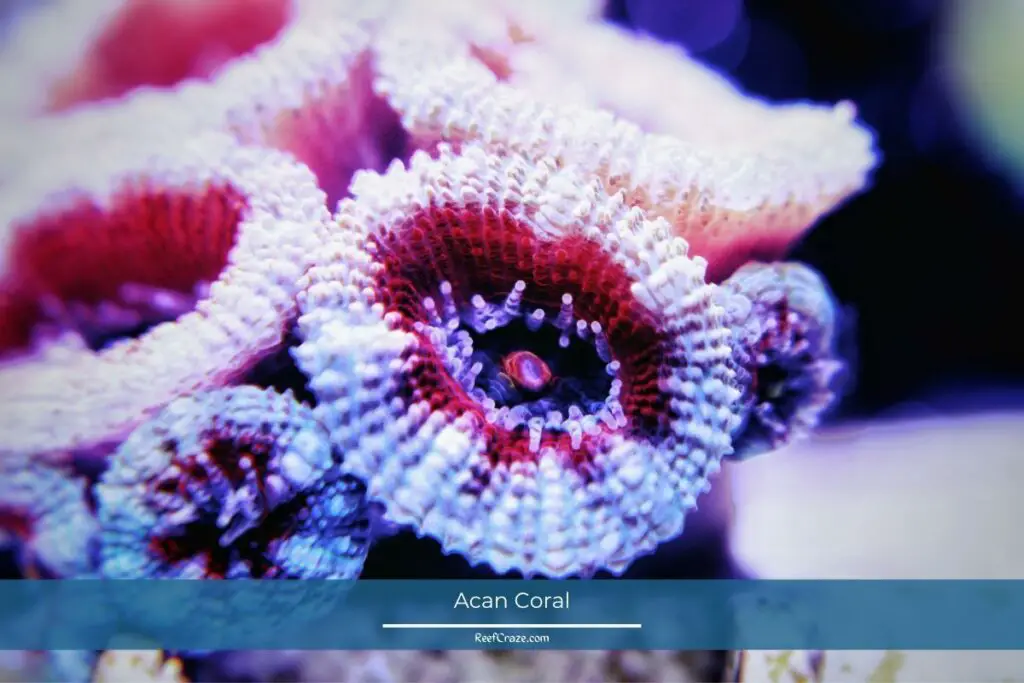
| Acan Coral | Description |
|---|---|
| Food | Acans are active eaters, thriving on pellet foods or thawed shrimp. |
| Lighting and Water Flow | This coral requires a moderate light intensity of around 50 PAR, making it an economical choice for beginners. They prefer medium to high water flow and should be placed in an area with low lighting and strong current. |
| Nature | Acans can become aggressive when placed close to tank mates. Their sweeper tentacles allow them an additional reach of 1 inch, so be careful when positioning them in your tank. |
3. Trumpet Coral
The Trumpet Coral, also known as Candy Cane coral, is one of the most widely available and affordable LPS corals. Their tubular polyps, coupled with their vibrant colorations, make them a favorite among aquarists.
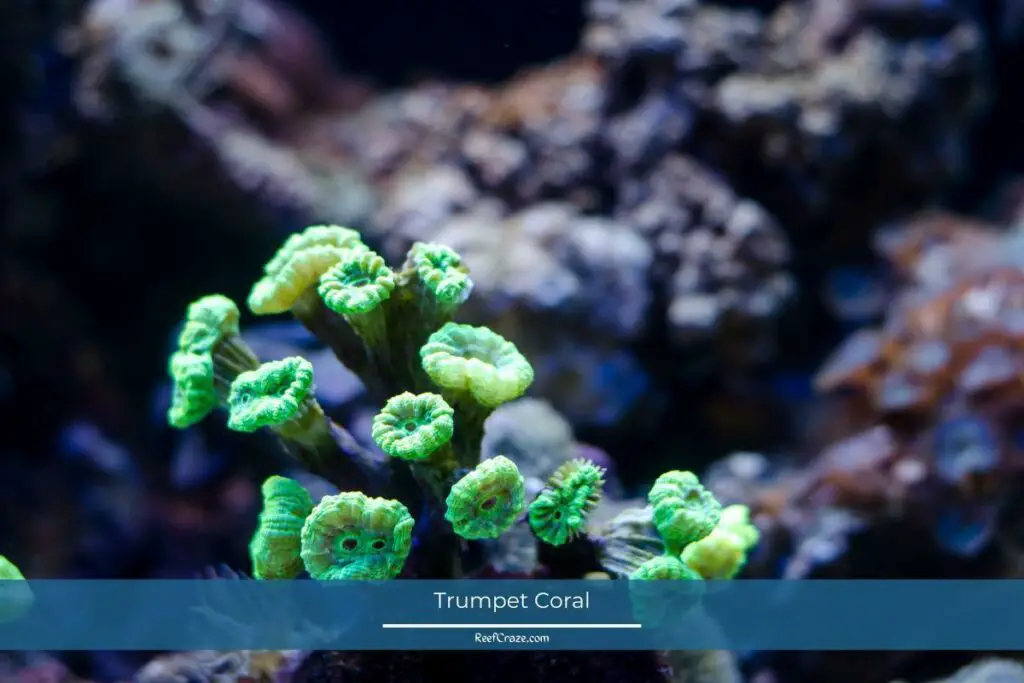
| Trumpet Coral | Description |
|---|---|
| Lighting and Water Flow | Trumpet Corals are undemanding, requiring low light and low water flow. However, the water flow should be sufficient to wash away debris and mucus, ensuring a comfortable living environment. |
| Food | Candy Canes are active eaters and can be fed 2-3 times a week with formulated pellets, Mysis shrimp, and other similar items. |
| Nature | While not overtly aggressive, their small sweeper tentacles can sting anything swimming too closely. |
4. Brain Coral
Characterized by their grooved and ridged surfaces that resemble a brain, Brain Corals are fascinating additions to any aquarium. They come in a wide variety of growth patterns and are known by other names like Moon Coral and Pineapple Coral.
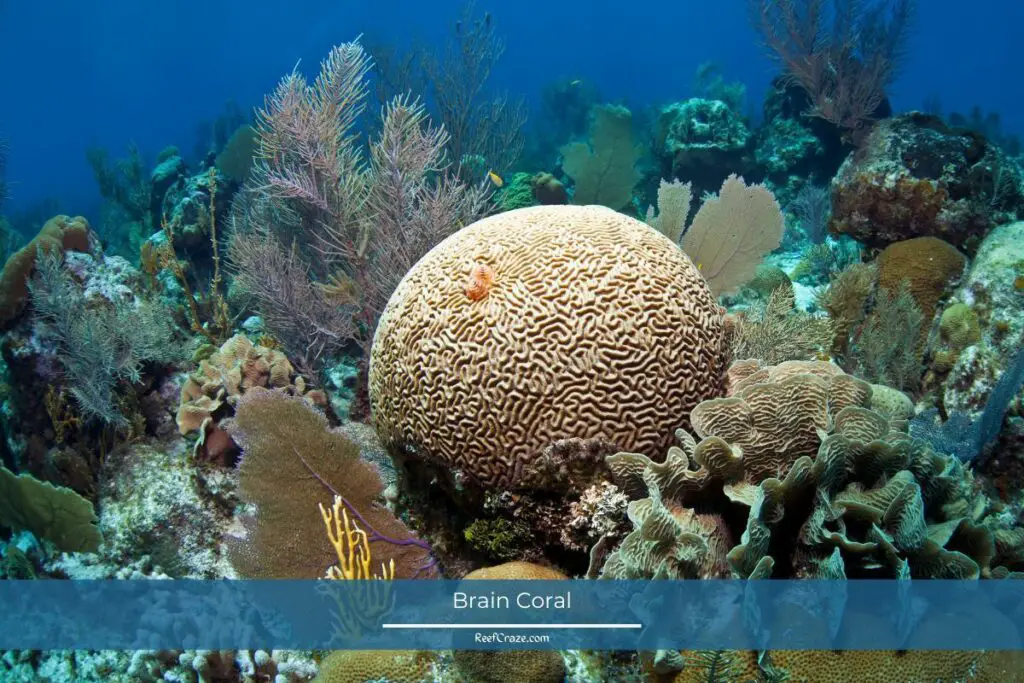
| Brain Coral | Description |
|---|---|
| Lighting, Water Flow, and Food | Mid-ranges of lighting and flow are crucial for Brain Corals, and higher lighting is even better. Regular coral foods such as copepods and brine shrimp work well for them. |
| Nature | Brain Corals use their tentacles to hunt small prey in the water at night. When hungry, they can sometimes harm other corals. |
| Fragging | Fragging Brain Corals can be challenging for beginners, as they need to be cut along the corallite to prevent excessive damage. It’s best to let them reproduce naturally. |
5. Lobed Brain Coral
Known for its peaceful demeanor, Lobed Brain Coral, also known as Lobo Coral or Open Brain Coral, is a delightful addition for beginners. Its unique lobed structure creates a surreal sight in a semi-dark aquarium ambiance.
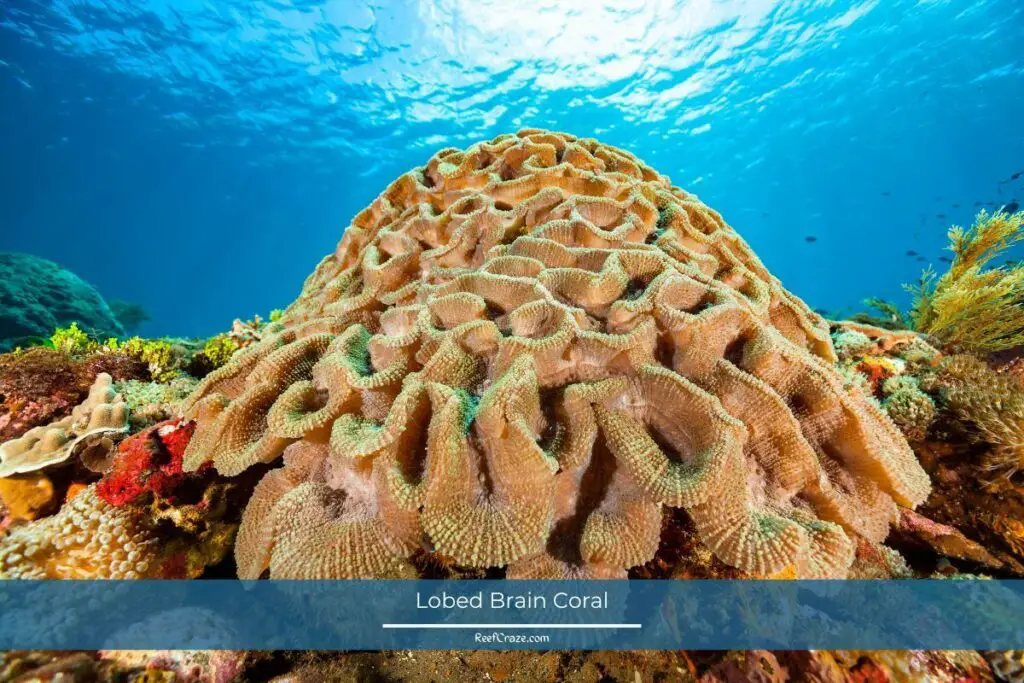
| Lobed Brain Coral | Description |
|---|---|
| Lighting | Preferring low light conditions, a PAR value of 100 is just the right intensity for this coral’s growth. |
| Water Flow | Moderate to low current is necessary, with high flow potentially causing the coral to retract or move. |
| Nature | This coral is generally peaceful, with no sweeper tentacles, and does not harm its neighbors. It requires a bit of space for peaceful living. |
6. Disk Coral
Disk Coral, also known as Tongue Coral or Fungus Coral, is a captivating coral species often found in shades of green, purple, yellow, and pink. Its distinctive appearance and mobility make it an interesting addition to the aquarium.
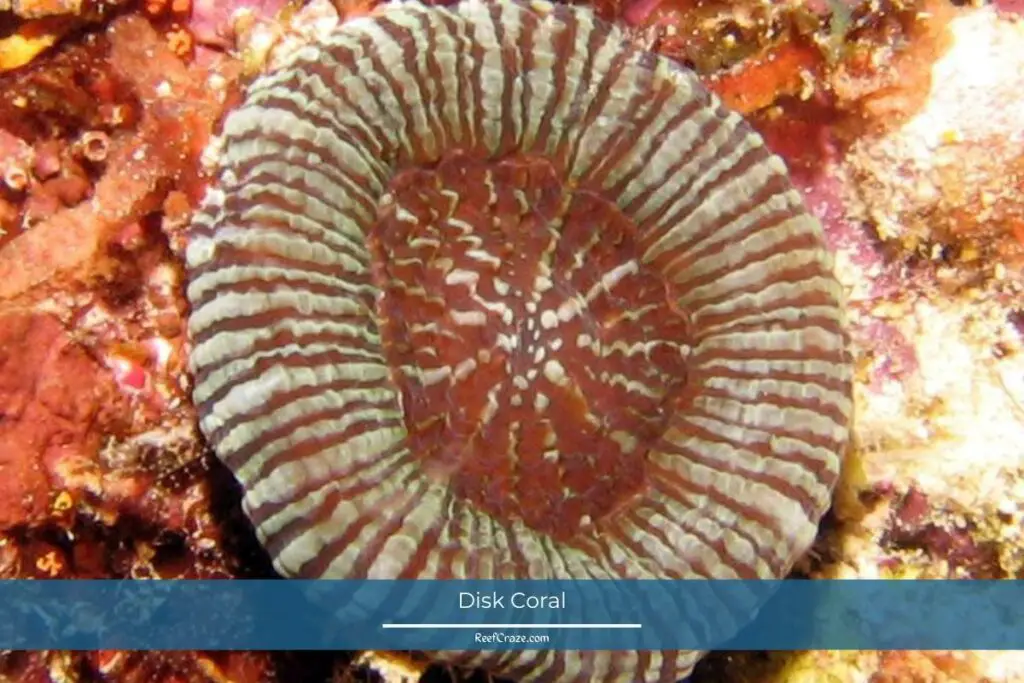
| Disk Coral | Description |
|---|---|
| Lighting, Water Flow, and Food | This coral requires high-intensity lighting and moderate water current. Regular feeding, twice to thrice a week with brine shrimp, Mysis shrimp, and small invertebrates, is necessary for its growth. |
| Nature | Uniquely, Disk Coral can move, covering about 10-12 inches per day. It is generally peaceful unless its path is blocked, in which case it can release toxic mucus. |
7. Bubble Coral
The Bubble Coral is an intriguing species known for its bubble-like polyps that give it a unique, fascinating appearance. It’s an ideal choice for hobbyists looking for something a little different.
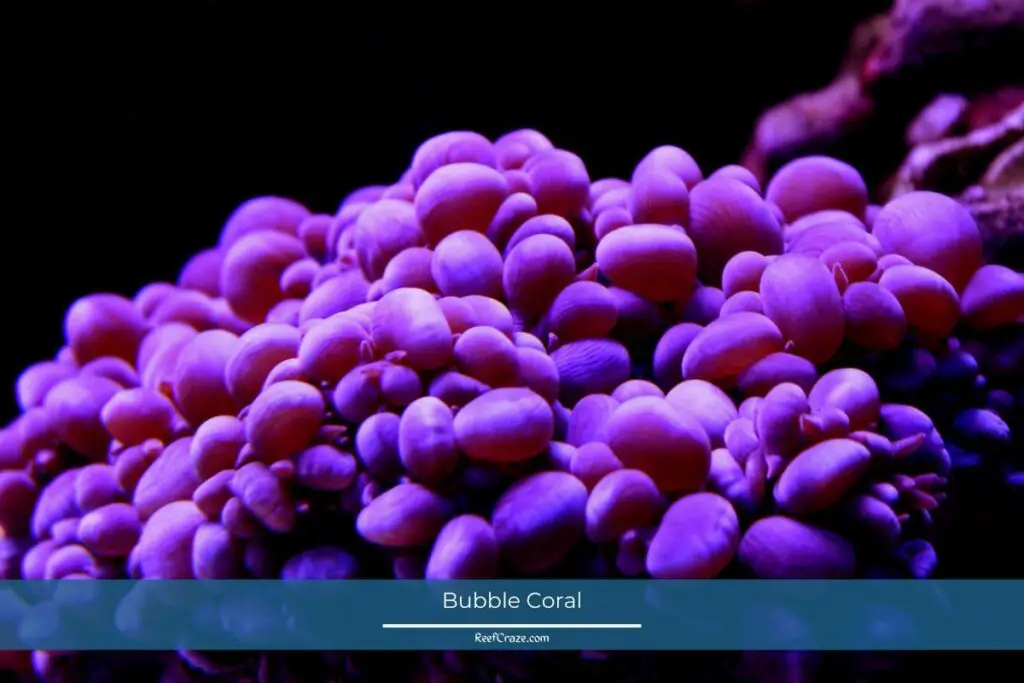
| Bubble Coral | Description |
|---|---|
| Lighting, Water Flow, and Food | Bubble Coral thrives in low light conditions and a gentle water flow. Regular feeding with coral foods is necessary for its growth. |
| Nature | Bubble Coral is aggressive at night, with extended tentacles and deflating bubbles that can sting other corals. Ensure there is a distance of at least 6 inches between it and other tank inhabitants. |
This coral has an oddly structured skeleton you have to handle with care. The sharp edges will cut through its flesh when contacting another solid surface, causing infection or even death.
Another interesting fact is its regenerative ability. Do not throw it out immediately after a Bubble Coral dies. A little healthy flesh on its dying skeleton will revive and regain its health within months to create a tiny but thriving colony again.
Other Beginner-Friendly LPS Corals
You will get more LPS Corals from the list below. They share similar characteristics and requirements to those of the previous ones.
- Torch Coral
- Slipper Coral
- Plate Coral
- Tube Coral
- Chalice Coral
- Tooth Coral
- Elegance Coral
- Pagoda Coral
- Fox and Jasmine Corals
Tank Requirements For LPS Corals
In terms of chemicals, marine reefs have a strictly stable environmental condition with gradually low ammonia and nitrate, maintaining the accurate concentrations of strontium, magnesium, calcium, and other fundamental elements.
When you build a reef tank setup, ensure it resembles the wildlife environment as closely as possible. Here are the water parameters to maintain for your LPS corals.
| Temperature | 72 to 78 degrees of Fahrenheit |
| pH Level | 8.00 to 8.24 |
| Specific Gravity | 1.023 to 1.025 |
| Calcium | 350 to 350 ppm |
| Magnesium | 1200 to 1350 ppm |
| Alkalinity | 9 to 12 DKH |
| Phosphate | 0 ppm |
Final Words
Whichever LPS Coral you choose in the end, it will add new color, movement, and life to your reef tank. They are indeed a suitable option for beginners. They are not demanding, highly tolerant of changes, and populate fast.
As a reefer, your job is to bring them into your tank only after it develops a healthy reef system. And when you introduce them to the new environment, they will require monitoring while adjusting to it.
Look for symptoms of stress, discoloration, lethargy, or unusual behavior to detect whether they are having problems getting adjusted. If they are present, take your time to make the necessary adjustments. They will be patient and forgiving of that.
Once you make the corrections and they get settled, the rest will be all about you enjoying the company of your precious corals.
